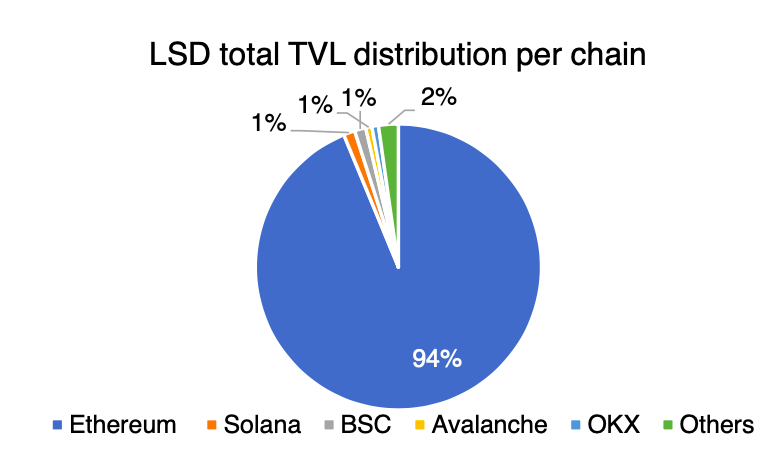Since Ethereum’s move to a proof-of-stake consensus mechanism, one particular area of crypto experienced a boom considerable, that of liquid staking derivatives (Liquid Staking Derivative, LSD). A document published by the digital asset management company Haskey Capital examines how this market is revolutionizing the way the Ethereum network is secured. The authors of the document entitled ” A Look at Liquid Staking Revolution cautioned that while liquid staking brings many benefits, it also comes with some drawbacks.
Liquid staking creates new investment opportunities
Contrary to what some analysts feared, staking on Ethereum is a booming business. The numbers speak for themselves. The report’s authors noted that $140 million is being staked on the Ethereum blockchain every day and staking has increased by around 15% since the shapella upgrade.

According to analysts’ forecasts, in the long term, the percentage of ETH supply in staking could reach 45%. Thus, staking represents an opportunity of several hundred billion dollars. The market capitalization of liquid staking projects has seen an impressive increase to $18 billionindicating a substantial influx of interest and investment.
The reasons behind the acceleration of liquid staking
LSD protocols bring significant benefits to users engaging in staking. In most cases, the capital allocated to validators on proof-of-stake type blockchains is not liquid. This means that this capital is unavailable and the user cannot do much else with these locked assets.
Through LSD protocols, a “derived” token that represents this asset is issued to the user who can employ it for many purposes in the DeFi ecosystem. The democratization of staking has accelerated thanks to technology DVT – Distributed Validator Technology. It allows many validators to come together and work as a single unit from a network perspective.
Ethereum is the largest blockchain in terms of number of LSD protocols and therefore, holds the highest proportion in terms of TVL. LSD on Ethereum represents 94% of the entire liquid staking market TVL, all blockchains combined. There are 13 liquid staking protocols on Ethereum with TVL over $10 million.

Centralization, the main risk of liquid staking
The risk of centralization had already been identified as one of the main risks associated with liquid staking. HashKey Capital noted that several LSD protocols rely on a limited number of node operators, thus centralizing a significant portion of validating nodes. This concentration could lead to reduced competition and an increased risk of censorship at the transaction level..
That’s not all. Centralization also threatens network security. The dominance of the main staking players makes the Ethereum ecosystem more susceptible to attacks by 51%. Furthermore, the potential for collusion between centralized players is significant, leading to actions that go against the foundation of decentralization at the heart of the crypto industry, such as the front running (anticipation of transactions) and attempts to maximize extractable value (MEV).
Source : HashKey Group
